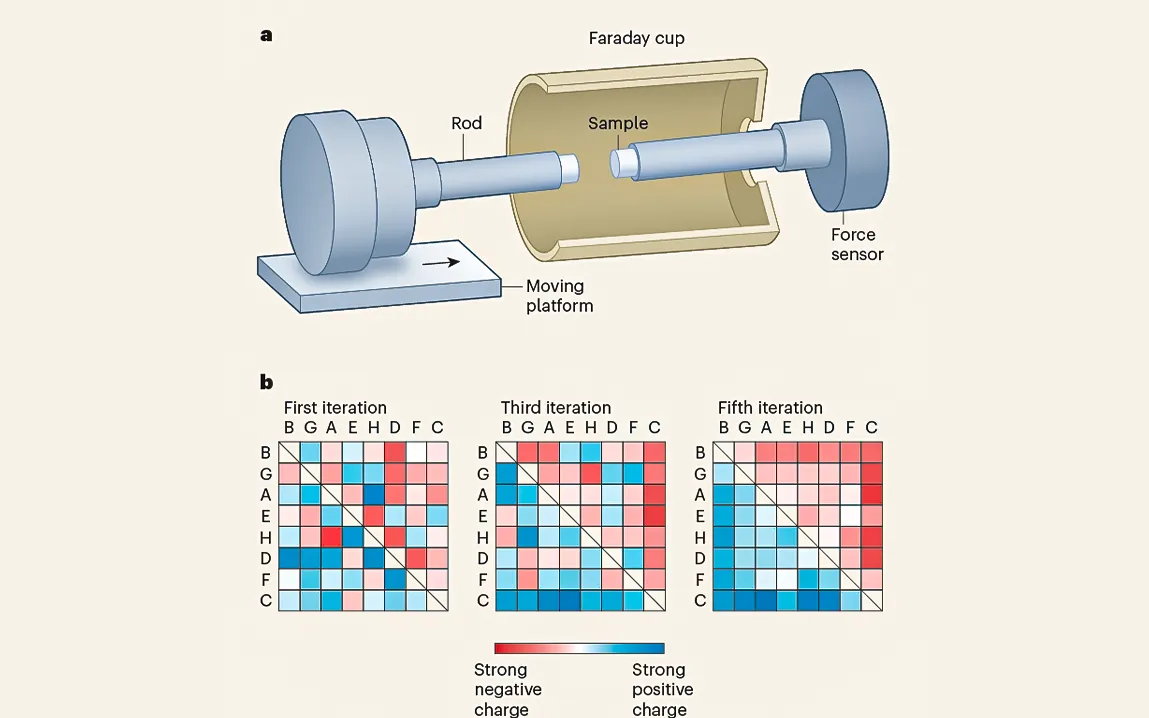Static electricity is something we have come to know: from the shock we get from grabbing a doorknob to how a balloon clings to our hair when rubbed on it. Despite being so common, the physics of static electricity, or contact electrification, has puzzled the scientific community for centuries. New research done at the Institute of Science and Technology Austria makes headway in this old conundrum, revealing that indeed, the prior history of contact between materials quite importantly determines the nature of charge exchange.
The General Mystery of Contact Electrification
In reality, contact electrification is a transfer of electric charge between two materials that come into contact with each other and separate. The phenomenon is that which we call static electricity inside our homes and is useful or detrimental to many industries, ranging from the manufacture of electronics to health. However, forecasting the end of such charge exchange has proven difficult due to a large number of factors-running from a material’s electronic properties and surface chemistry to the actual environmental conditions.
A Historical Perspective
For centuries, researchers have known that two identical materials can take on opposite charges when they come into contact, which cannot be explained simply. Early theories held that variation in material properties alone was responsible for the transfer of charge. However, inconsistencies in the data from experiments offered a hint that there was something more complicated involved.
The ISTA Breakthrough
Scientists at ISTA, headed by PhD student Juan Carlos Sobarzo, conducted a study aimed at better understanding the parameters that determine contact electrification. They found that the history of contacts of materials—i.e., how they have previously contacted each other—is a crucial determinant of how they transfer charges. This result suggests that the order and type of previous contacts can influence the charging properties of the material, even if otherwise identical.
Experimental Insights
The ISTA researchers carefully controlled contact events in their experiments, monitoring how multiple interactions affected charge transfer. They discovered that materials that shared a contact history charged differently than those without a shared history. This implies that each contact event leaves a permanent mark, changing the surface characteristics of the material and thus its electron gain or loss propensity in subsequent interactions.
Implications of the Findings
The realization that contact history affects charge transfer has far-reaching implications:
- Manufacturing Predictability: Process industries that depend on static charge control accuracy, like semiconductor manufacturing, can apply this information by designing processes to compensate for material contact history, decreasing defects, and enhancing product quality.
- Advances in Materials Science: The realization provides novel opportunities for crafting materials with predesigned charge transfer properties that might result in new energy storage, sensor technologies, and so forth.
- Greater Safety Precautions: For settings where discharge poses hazards, e.g., in the working with combustibles, recognition of the influence of contact history could guide improved precautionary measures that avoid unwanted spark-initiated fires.
The contribution of Environmental Variables
The ISTA research also points to the interaction between environmental conditions and contact history. Temperature and humidity can affect the degree to which earlier contacts influence charge transfer. Moisture, for example, can change surface conductivity, thus influencing the distribution of charges during contact events. This points to the importance of addressing both material history and environmental setting in applications involving static electricity concerns.
A Step Towards General Awareness
While the present work constitutes a breakthrough towards our understanding of contact electrification, it nonetheless leaves a platform for others. How exactly does the occurrence at the surface, at a molecular level, relate to what has been noticed? What contribution of microscopic irregularities on the surface is relevant with respect to the transfer of charges? These, though, need solving through some collaborations across the subject areas involving physics, chemistry, and material sciences.
Conclusion
The discovery that a material’s history of contacts affects its charge transfer behavior provides a new understanding of the age-old mystery of static electricity. By accepting the cumulative effect of previous contacts, scientists and engineers can construct better models and creative solutions in a wide range of fields. As studies further uncover the mysteries of contact electrification, we get closer to taming and harnessing static electricity in ways we could not previously imagine.



